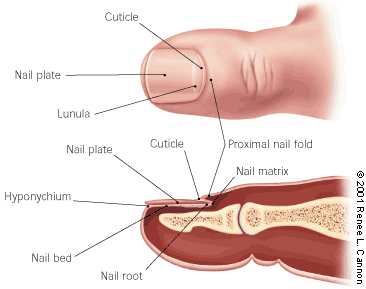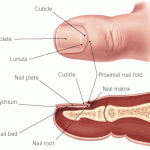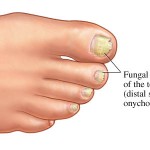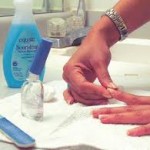During Prusinski’s research she learned that MMA used in many shops costs only $20 a gallon, while a gallon of required adhesive costs $200.
When you enter a salon using MMA, you will receive an instant headache from the odor.
Find out the name of products being used. Make sure it is a brand-name.
Some nail technicians do not soak acrylic nails off, they peel them off with a knife or another acrylic nail. This is improper.
Since it takes 3-4 hours to remove nails applied with MMA, peeling the nail off saves them time.
Nails adhered with normal sealant usually take about one hour to remove with acetone.
Quite often techs in mass production salons use the same files multiple times on different clients.
“You have to sanitize files and other equipment,” said Prusinski. “If a client has nail fungus, you must throw out any equipment used on that client, except for instruments you can sanitize.”
Without proper sanitization, blood-borne diseases can be passed, such as hepatitis.
Make sure the tech has a brand-name sanitizer at the table, not just one that says “sanitizer.”
They must also spray the table and equipment between clients.
Other instruments should be stored in a bottle of sterile liquid in the client’s view; don’t trust instruments that are simply pulled out of a drawer.
In mass production shops nail techs often drill the natural nail bed down to the skin, which causes permanent damage by creating ridges in the nail bed. It takes months to a year to grow out these ridges.
“These nail techs are trying to ruin your nail bed so you have to come back,” Prusinski said.
It is illegal to use a “drill” on the natural nail. It can only be used on the tips, or acrylics.
Cuticles should never be cut. It is against the law, according to a web site called www.nailsplash.com. Cuticles are “live skin” and “live skin” can only be cut by licensed doctors with sterilized implements.
Tips & Warnings
- You must tell the nail salon you’re suffering from a fungus. Nail fungus can easily spread and the salon will want to take the proper precautions.
- Always wash your hands if you come in contact with an infected nail. When you do this, you prevent spreading the fungus to other fingernails.
Salon sanitary standards set by the Department of Professional Regulation
The sanitary standards noted below by the Illinois Department of Professional Regulation (1175.115/ Sanitary Standards) are to be followed by all licensees as appropriate to their practice. Failure to comply with these standards shall be considered unprofessional conduct and may be determined to be a violation.
The following is printed directly from IDPR information:
- Definitions
- “Hospital Grade Disinfectant” is defined as a disinfectant that is registered with the Environmental Protection Agency as a hospital-level disinfectant and that performs the functions of bactericides (kill harmful bacteria), virucides (kill pathogenic viruses), and fungicides (destroy fungus).
- “Disinfect” means to clean with an agent that eliminates microbacteria growth.
- “Sanitize” means to clean with hot water and soap.
- Sanitary Requirements
- All instruments and tools shall be sanitized before and after each patron and kept in an air tight container until used.
- All nondisposable manicure implements shall be cleaned with a hospital grade disinfectant.
- Manicure tables shall be cleaned with an antibacterial disinfectant.
- Clean towels shall be used for each patron.
- Wood sticks and files (except sanitizable file and buffing block) shall be discarded after each use.
- Shampoo bowls must be sanitized after each use.
- Hands must be cleaned before and after serving each patron.
- Head rests of any chair shall be protected with a disposable cover and changed after each use, or a clean washable towel may also be used.
- All cosmetics shall be applied with sanitized or disposable applicators and removed from the container with a sanitary spatula.
- Clean nondisposable esthetics sheets, gowns and head coverings shall be used for each patron.
- Animals, such as birds and cats, are not permitted (with the exception of seeing eye animals for the physically impaired).
-
All floors, walls and furniture shall be kept clean at all times.
- All soiled towels shall be kept in a covered container.
- All clean towels shall be kept in a closed or covered space.
- All hair that is swept up from the floor shall be kept in a covered container.
- Proper disposal of unused products and packaging is required.
- Proper disposal and handling of hazardous materials is required.
- The use of nail products or the distribution of nail products containing monomer Methyl Methactylate (MMA) is prohibited.
- No owner or manager of a salon or shop shall knowingly permit any person suffering from a serious communicable disease, as defined in public health regulations, to work on the premises.
- All owners or managers of salons or shops shall provide adequate ventilation as required by the city, county or municipality and insure that an adequate supply of hot and cold running water is available.



